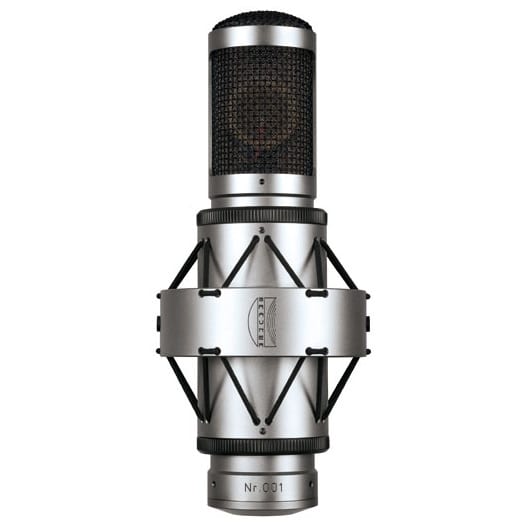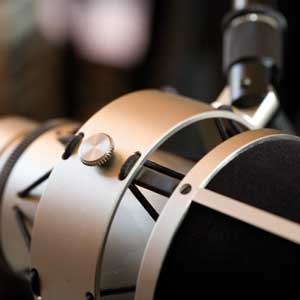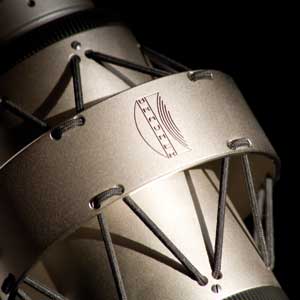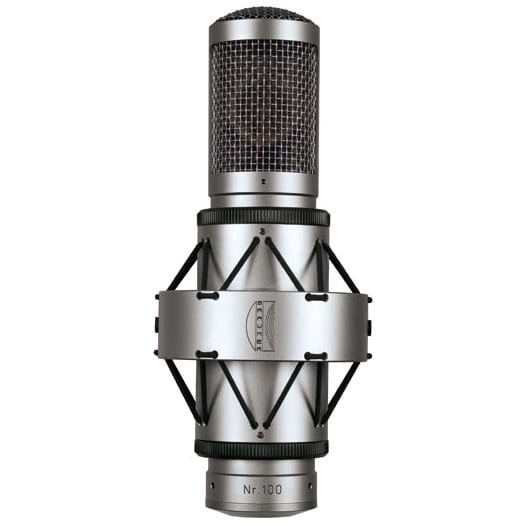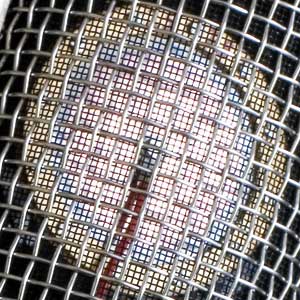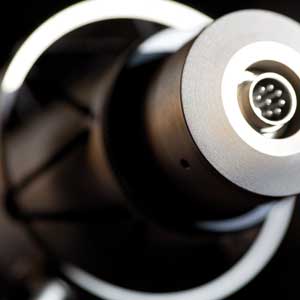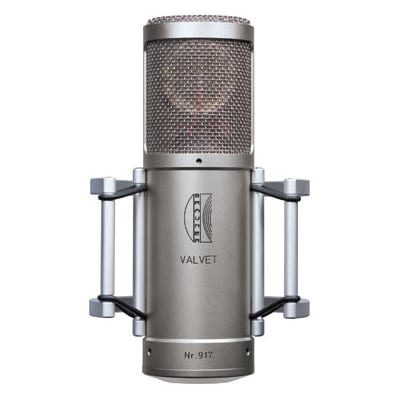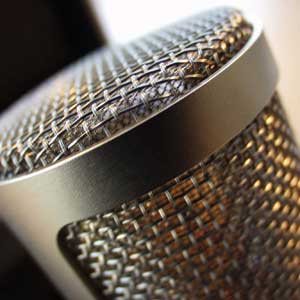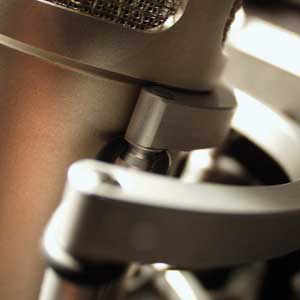 When German microphone manufacturer Neumann announced at NAMM 2018 that they were reissuing the U67, the response was one of incredible excitement throughout the recording industry. Any discussion among audio engineers about the greatest microphones of all time will no doubt include this tube condenser microphone. Its versatility and smooth response to any audio signal are virtually unmatched by any other tube microphone (except, arguably, Neumann’s “other” famous tube microphone, the older U47.) Its quality is evidenced not only by the high asking price of used U67s, and their presence in virtually every high-end, famous recording studio, but also by their use on thousands of classic albums, recording just about any instrument or voice.
When German microphone manufacturer Neumann announced at NAMM 2018 that they were reissuing the U67, the response was one of incredible excitement throughout the recording industry. Any discussion among audio engineers about the greatest microphones of all time will no doubt include this tube condenser microphone. Its versatility and smooth response to any audio signal are virtually unmatched by any other tube microphone (except, arguably, Neumann’s “other” famous tube microphone, the older U47.) Its quality is evidenced not only by the high asking price of used U67s, and their presence in virtually every high-end, famous recording studio, but also by their use on thousands of classic albums, recording just about any instrument or voice.
And Parsons Audio will not only have several microphones available for purchase, but will actually loan the microphone out to local studios and professionals (for pickup only) for a one-week trial period.
 Neumann, with their high standards and stereotypically impressive “German engineering”, insist that this reissue is “sonically identical” to an original U67. They’ve gone to great lengths to match the parts of the reissued microphone to its predecessor, most notably the BV12 output transformer. It also uses low-noise EF86 tubes, which actually have a higher filament current than the originals. The only redesign that the company has added to this reissue is in the power supply, which not only meets modern safety and environmental compliance regulations, but actually optimizes the power for the newer high-filament tubes. The power supply also, crucially, will work on any U67 microphone regardless of when it was made, which is great news for owners of vintage models who either can’t find or need a better-working power supply.
Neumann, with their high standards and stereotypically impressive “German engineering”, insist that this reissue is “sonically identical” to an original U67. They’ve gone to great lengths to match the parts of the reissued microphone to its predecessor, most notably the BV12 output transformer. It also uses low-noise EF86 tubes, which actually have a higher filament current than the originals. The only redesign that the company has added to this reissue is in the power supply, which not only meets modern safety and environmental compliance regulations, but actually optimizes the power for the newer high-filament tubes. The power supply also, crucially, will work on any U67 microphone regardless of when it was made, which is great news for owners of vintage models who either can’t find or need a better-working power supply.
The reissue ships with the new power supply (the NU 67 V), power cable, connection cable and shock mount. These are all conveniently located in a handmade case that recalls the vintage cases of the original U67. The microphone will begin shipping in March of 2018. Without a doubt, this reissue will put the microphone in as high demand as ever, perhaps even more so.
Parsons Audio is offering a loan-out trial, which will allow local studios to borrow and try the microphone out for a week, absolutely free. This will make it easy for you to get a taste of this microphone’s amazing potential. Please contact Parsons Audio to schedule a demo.
Product Description:
 Originally issued in 1960, this microphone features all-tube circuitry and Neumann’s legendary K 67 capsule. This capsule allowed it to have less of a mid-range response than its predecessor tube microphones, which engineers at the time greatly appreciated. Preventing disruptive low-end frequencies and de-emphasizing harsh high frequencies, its linear phase response gives it an incredibly smooth overall tone. It also features three polar patterns: cardioid, omnidirectional, and an at-the-time revolutionary figure 8 pattern. It also features a low-cut filter which reduces proximity effects, and can be useful for recording close-distance signals, such as a close vocal or guitar. Additionally, there is a roll-off that prevents rumble at extremely low frequencies. This microphone has, since its original release, been a top choice for recording vocals, guitars, amplifiers, pianos, strings, horns, and drums (as overheads, room mics, or close-mics depending on the signal).
Originally issued in 1960, this microphone features all-tube circuitry and Neumann’s legendary K 67 capsule. This capsule allowed it to have less of a mid-range response than its predecessor tube microphones, which engineers at the time greatly appreciated. Preventing disruptive low-end frequencies and de-emphasizing harsh high frequencies, its linear phase response gives it an incredibly smooth overall tone. It also features three polar patterns: cardioid, omnidirectional, and an at-the-time revolutionary figure 8 pattern. It also features a low-cut filter which reduces proximity effects, and can be useful for recording close-distance signals, such as a close vocal or guitar. Additionally, there is a roll-off that prevents rumble at extremely low frequencies. This microphone has, since its original release, been a top choice for recording vocals, guitars, amplifiers, pianos, strings, horns, and drums (as overheads, room mics, or close-mics depending on the signal).
The amazing sound that the microphone gives vocals in particular are arguably what it is best known for: the warmth and smoothness that it imparts on both male and female voices will work impressively in just about any musical genre, from opera, musical theater and traditional jazz singers to rock and R&B vocalists. This microphone is a favorite of many famous vocalists, such as James Taylor who uses it almost exclusively.
 Equally impressive is the way it sympathetically responds to classical instruments like piano, strings and woodwinds. A notable use of the microphone on piano can be heard on The Beatles’ ground-breaking recording of “A Day in the Life”. Its intangible but undeniable “warmth” will smooth out any harsh frequencies that would frustrate the majority of lesser microphones. If recording a string ensemble, a piano, or similarly “roomy” recording, its three polar patterns make it even more versatile. The omnidirectional and figure 8 patterns can add a wonderful room ambiance in these instances.
Equally impressive is the way it sympathetically responds to classical instruments like piano, strings and woodwinds. A notable use of the microphone on piano can be heard on The Beatles’ ground-breaking recording of “A Day in the Life”. Its intangible but undeniable “warmth” will smooth out any harsh frequencies that would frustrate the majority of lesser microphones. If recording a string ensemble, a piano, or similarly “roomy” recording, its three polar patterns make it even more versatile. The omnidirectional and figure 8 patterns can add a wonderful room ambiance in these instances.
The microphone is also notable in that it is capable of handling up to 124db of sound pressure without any distortion at all. With Neumann’s excellent pre-attenuation and the U67’s -10db pad switch, loud drummers and hot guitar amplifiers are not only totally manageable, but actually sound fantastic, better than many other types of microphones that are usually thought of as more suited to those purposes. The same can be said for loud horns such as saxophones, trombones and trumpets, whether closely mic’d on one instrument or placed farther back to record an ensemble. And again, depending on the use, the three cardioids patterns add to its range of applications. Any signal can remain very clean up until the sound pressure level limit, and can in fact still sound fantastic (depending on taste) at even higher decibel levels, by imparting a tube-style natural overdrive that is nonetheless still very clear and smooth.
[gravityform id=3 title=true description=false ajax=true tabindex=49]

